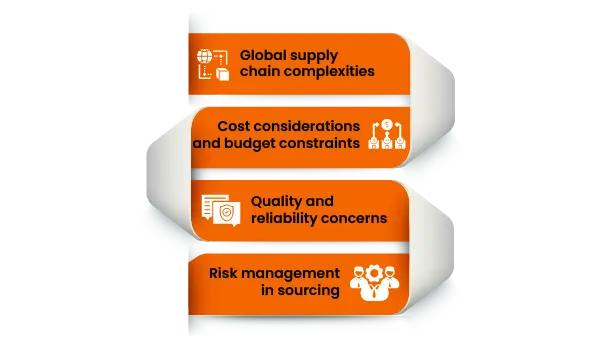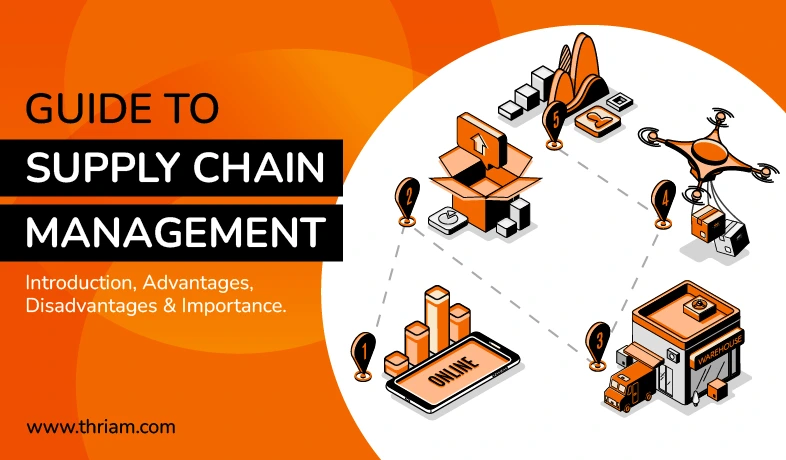Unlocking Efficiency: Best Practices for Strategic Sourcing in Mechanical Engineering

Introduction
In the fast-paced world of mechanical engineering, strategic sourcing plays a crucial role in ensuring operational efficiency, reducing costs, and maintaining supply chain integrity.
Definition of strategic sourcing

Strategic sourcing refers to the systematic and proactive approach of identifying, evaluating, and selecting suppliers to align with an organization's long-term goals and objectives. It involves analyzing the supply chain, market trends, and pricing fluctuations to make informed decisions on sourcing materials and components. The goal of strategic sourcing is to optimize costs, improve quality, reduce risks, and build strong supplier relationships to enhance overall operational efficiency. By strategically planning and executing sourcing activities, organizations can gain a competitive edge in their industry and drive sustainable success.
Importance of strategic sourcing for ensuring efficiency and reducing costs in the supply chain
Strategic sourcing holds immense importance in ensuring efficiency and reducing costs in the supply chain. By implementing strategic sourcing practices, organizations can identify the most reliable and cost-effective suppliers, optimize purchasing decisions, and streamline procurement processes. This leads to improved inventory management, reduced lead times, and enhanced operational efficiency. Additionally, strategic sourcing allows organizations to negotiate favorable terms, such as competitive pricing and contractual arrangements, resulting in significant cost savings. With a well-executed strategic sourcing strategy, organizations can reduce risks, increase productivity, and ultimately achieve a competitive advantage in the market.
Overview of the mechanical engineering supply chain
The mechanical engineering supply chain involves the flow of materials, components, and equipment from suppliers to manufacturers within the mechanical engineering industry. It begins with the procurement of raw materials and components required for the production of mechanical products. These materials are sourced from suppliers globally, considering factors such as quality, cost, and lead time. Once the materials are acquired, they undergo various manufacturing processes, including machining, fabrication, and assembly, to produce mechanical products. These products are then distributed to wholesalers, retailers, or directly to end customers through a network of logistics and distribution channels. The mechanical engineering supply chain focuses on ensuring the timely delivery of high-quality products while managing costs, minimizing waste, and maintaining supply chain visibility and agility.
Effective strategies and techniques for sourcing materials and components in the mechanical engineering supply chain
I. Understand Your Supply Chain:
A deep understanding of the mechanical engineering supply chain is essential. Identify key stakeholders, such as suppliers, manufacturers, and distributors, and gain insights into their roles and relationships in the ecosystem.
II. Develop Strong Supplier Partnerships:
Building long-term, mutually beneficial relationships with suppliers is foundational to strategic sourcing. Foster open lines of communication, establish trust, and collaborate on continuous improvement initiatives.
III. Conduct Thorough Market Research and Analysis:
Knowledge is power. Stay informed about market trends, pricing fluctuations, and availability of materials and components. Conducting thorough research and analysis will empower you to make informed decisions and identify potential risks.
IV. Implement a Robust Supplier Qualification Process:
To ensure the quality and reliability of suppliers, establish a comprehensive supplier qualification process. Evaluate supplier capabilities, quality standards, certifications, and financial stability. Regular audits and assessments will help maintain quality control.
V. Negotiation Techniques for Optimal Outcomes:
Effective negotiation skills are paramount in securing competitive pricing, favorable contract terms, and reduced lead times. Be prepared, understand your bargaining power, and focus on building win-win agreements.
VI. Embrace Risk Management Strategies:
With a globalized supply chain, it is vital to manage and mitigate risks effectively. Implement risk assessment methodologies, diversify your supplier base, and formulate contingency plans for unforeseen disruptions.
VII. Leverage Technology for Streamlined Sourcing:
Incorporate technology to streamline sourcing processes. Utilize e-procurement tools, data analytics, and automation to improve efficiency, reduce errors, and make data-driven decisions.
VIII. Optimize Material and Component Sourcing:
Maximize efficiency in sourcing by managing supply chain visibility and traceability. Implement advanced tracking systems to monitor material movement, synchronize production schedules, and improve inventory management.
IX. Adopt Lean and Just-in-Time Practices:
Lean principles and just-in-time (JIT) practices minimize waste and excess inventory, improving productivity and reducing costs. Collaborate with suppliers to synchronize production and delivery schedules.
X. Promote Corporate Social Responsibility and Sustainability:
Ethical and sustainable sourcing practices are increasingly important. Evaluate suppliers based on their commitment to environmental sustainability and social responsibility. Ensure compliance with industry standards and regulations.
Challenges in Sourcing Materials and Components

Sourcing materials and components is a critical aspect of supply chain management, and it comes with several challenges. These challenges often include global supply chain complexities, cost considerations and budget constraints, quality and reliability concerns, and risk management in sourcing.
A. Global supply chain complexities:
Sourcing materials and components globally can be challenging due to factors like different time zones, languages, and customs. Additionally, shipping regulations and documentation requirements can vary from country to country, making it challenging to move goods across borders. To overcome these complexities, organizations must establish strong relationships with global suppliers, implement robust supplier selection processes, and invest in digital supply chain solutions.
B. Cost considerations and budget constraints:
Organizations must balance quality requirements with cost considerations when sourcing materials and components. Sourcing low-cost materials can sometimes lead to quality issues and increased risk, negatively impacting product performance and brand reputation. However, sourcing high-quality materials may result in higher costs, which may not be feasible under budget constraints. To mitigate these challenges, organizations must engage in cost-benefit analysis, establish target costs, and explore alternative sourcing options.
C. Quality and reliability concerns:
When sourcing materials and components, quality and reliability are critical considerations. Poor-quality materials can result in product defects, recalls, and dissatisfied customers, while unreliable suppliers can cause supply chain disruptions. To address these challenges, organizations must establish clear quality standards and supplier evaluation criteria, such as quality management systems, performance metrics, and failure analysis.
D. Risk management in sourcing:
Sourcing materials and components involves inherent risks such as supplier bankruptcy, natural disasters, or geopolitical instability. Organizations must implement risk management strategies to mitigate these risks. This may include ensuring supplier diversification, implementing contingency plans, and establishing a crisis management protocol to address any potential disruptions.
Conclusion
Strategic sourcing is key to success in mechanical engineering. By implementing these best practices, professionals in the field can optimize their sourcing activities, improve supply chain efficiency, and achieve cost savings. Building strong partnerships, conducting meticulous market research, embracing technology, and prioritizing sustainability will undoubtedly unlock greater efficiency in sourcing materials and components. Stay ahead of the competition and elevate your mechanical engineering supply chain with these best practices.



